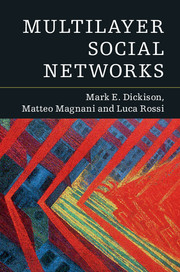1 - Moving Out of Flatland
Published online by Cambridge University Press: 05 July 2016
Summary
Be patient, for the world is broad and wide.
– The SquareOn May 1, 2011, Keith Urbahn, chief of staff of Donald Rumsfeld, wrote 77 characters announcing to the world that a turning point in contemporary history had been reached (Nahon and Hemsley, 2013):
So I'm told by a reputable person they have killed Osama Bin Laden. Hot damn.
These 77 characters started a chain reaction that led, within minutes, to the worldwide diffusion of the news and marked the beginning of the post-Osama era. First posted on Twitter, the news quickly reached millions of other Twitter users, then spread over tens of other online social networks, appeared in traditional media (e.g., television, radio), and became a common topic of discussion in the offline world, both in its original 77-character format and rephrased so that only its information content was preserved.
We can think of this event from many perspectives. We could focus on its historical value or observe how social media, like Twitter, are challenging the traditional relationship between politics and journalism.We could also use this tweet and the reactions to it to describe how information virality works in contemporary society and why the Internet has made it different from everything else we have seen in the history of humanity. For the concerns of this book, we can say that Mr. Urbahn provided yet another example of the multidimensional nature of our social experience.
Multiple Social Networks in Our Everyday Experience
Our social experience is inherently a multifaceted reality made of multiple interconnected networks defining our understanding of the world and our role in it. These networks do not exist autonomously; they are defined by our social relations and connected into a larger system by our activities. This is exactly what Keith Urbahn did when he tweeted something that a reputable person had told him: he defined a bridge between two networks. More precisely, he moved a specific piece of information out of an offline and exclusive network into a worldwide online digital network, and in switching between them, he was surely aware of the consequences.
- Type
- Chapter
- Information
- Multilayer Social Networks , pp. 1 - 12Publisher: Cambridge University PressPrint publication year: 2016



